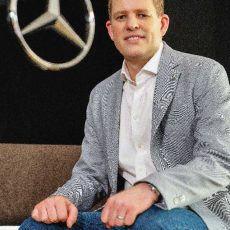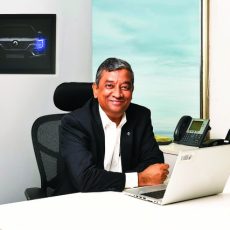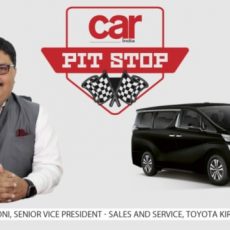


Turbo is one of the predominant factors in achieving optimum power from small-capacity engines. Thimmaiah N P, Managing Director, Honeywell Turbo (India) Pvt Ltd, talks about the nitty-gritty of this technology
Honeywell Global has been in India for decades, though not particularly in the turbo business. The company has been involved in four business verticals – aerospace, automation and control, transportation system (Honeywell Turbo) and advance material. Though Honeywell Turbo is the last entrant here, it considers India as a highly strategic location. We visited its state-of-the-art facility in Pune and did a quick Q & A with Thimmaiah N P, Managing Director, Honeywell Turbo (India) Pvt Ltd.
Car India: What types of turbos do you make here?
Thimmaiah N P: We make all kinds of turbos here. India, if you see some of the programme, is almost at par with the global technology. But a majority of the requirements in the Indian market is one generation lower.
CI: Who are your clients?
TNP: We either serve or will be serving almost all OEMs in India in another year or year-and-a-half. We have really won a lot of business in the last two to three years. Currently we are in various stages of execution of products for the OEMs.
CI: Why do you say in another year or so?
TNP: In turbo charger business the time between you win the business to SOP (start of production) takes about two to three years. This is because many of them are new engine development. For example, for Tata we have been working on Euro V development for the past three years. It is a two- to three-year evolution and for most OEMs we have won the business and are in the process of launching it.
The other thing is that we set up our establishment in 2005 and thus were the last entrant in the Indian market. We see the potential in the Indian automotive market, turbo penetration-wise. This is the youngest in our system and the newest factory in Honeywell Turbo business. So we have incorporated all our global learnings into this factory to make it one of the best. A couple of year ago this factory won the overall best performing plant among the 275 plants of Honeywell. We also export to Europe and Thailand for global OEMs.
CI: Tell us something about the different kinds of turbos.
TNP: There are three main types of turbos. The first among these is the Free-float turbo, wherein there is no control mechanism in the turbo system. The gas flow and the turbine and compressor rotate and it is very basic. This is generally considered to be an old technology and is very bulky. Moreover, the response has a strong turbo lag as it takes too much time to give adequate response to the vehicle. We also make these mainly for gen-sets, etc.
The next turbo technology is called the Waste-gate, where when the exhaust gas gets into the turbine wheel, initially you need a lot of gas because the engine is running slow and there is less gas. Turbo helps reduce the time to achieve peak power. So initially it pumps in everything and once the speed is acquired, you don’t need the extra gas, which needs to be bypassed. This is why there is a butterfly valve that helps to bypass the gas. This is the second generation technology.
The third is VNT – Variable Nozzle Turbine. It has a very precise nozzle mechanism inside the turbo charger, which accurately controls the amount of gas that flows into the (turbo) wheel and how much has to be bypassed. That’s how the response time is reduced further. The new technology here is the use of ball-bearing to reduce the friction so that the critical speed is achieved faster. This technology is used by BMW and Daimler (Mercedes-Benz), et al, globally. Though it is available in some of the cars in India, I don’t think this will be available in the mid-end or low-end, which will have it in the near future.
Then there are several combinations in the same, such as two-stage turbo. This is to manage your low-end requirements and torque improvements and the other for top-end performance and power requirements.
CI: Why is there so much evolution in the turbo systems?
TNP: Well, it’s mainly due to stricter emission norms like Euro V, Euro VI and Euro VII. The other reason is downsizing of engines. With the Cafe Standard (fuel economy standards) coming in, mainly in Europe, the US, China and, of course, in India as well, you need to have as small an engine as possible to impose certain fuel economy. One has to optimise using turbo chargers, so that more air can be drawn into the engine to make it perform at extremely high levels. Turbo is one of the predominant factors in achieving optimum power from small capacity engines.
CI: What is the current trend in Indian OEMs?
TNP: There is a lot of development happening in one-litre to 1.2-litre diesel turbo engines. So there is a fair bit of downsizing in India too from the current 1.5- and 1.4-litres.
CI: Do you make something India-specific or do you offer your global products here?
TNP: That is the key, as we don’t want to bring a global product, tweak it around and supply it to Indian OEMs. We want to understand the Indian customers’ needs, work towards them and develop specific products for India.
CI: What contribution do you make in developing an engine with an OEM?
TNP: In engine development, turbo and fuel injection pump (FIP) are the two that need to be with OEMs from day one. Contribution-wise we work together. All three – turbo, FIP and engine development – have to work hand-in-hand from the very beginning. It has to be a co-development activity and it is a full-time involvement. We are global leaders in terms of turbo technology, so we bring along a lot of knowledge and learning, even to the Indian automotive industry. We try how best we can incorporate our global learning in India.
CI: When will we see gasoline turbo-charging in Indian small cars?
TNP: Today we see several imported cars with gasoline turbo chargers. And we believe that gasoline turbo-chargers will kick in here as well. Today it may not be required as 1.2-litre or 1.3-litre may seem good enough on our roads, but when things improve, you need to optimise your performance and fuel economy. So in the long run, we will see several gasoline engines being turbo-charged. Globally this is the current trend and most of the new developments are all gasoline turbo-charged.
CI: What is the smallest engine with turbo that you are working on?
TNP: Currently the smallest is a 800-cc engine though the largest is about 100-litre for the Caterpillar heavy dumpers and trucks. The 800-cc petrol turbo charger has been developed for one of the OEMs in India. It is based on the small Waste-gate technology. There is a lot of interest from global OEMs for less than one-litre turbos as it can also be used on hybrid vehicles. I think this is going to be the biggest thing in the future of automobiles.
CI: But turbo would cost extra. How will it be cost-effective in smaller cars in the price-sensitive segment?
TNP: In diesel turbos are needed for fuel efficiency, so there is no way to eliminate that. In gasoline, to reduce the overall emission one has to downsize the engine and you get a lot of benefits in terms of cost and that’s how the turbo cost gets supplemented. And it has become one of the norms now, as without turbo one cannot even achieve the performance requirement.
CI: Globally automobile sales are showing a downward trend. How does it work for a turbo firm?
TNP: It is an exciting time to be working on turbos even globally, as the total penetration is about 26 to 30 per cent. Almost cent per cent diesel vehicles have turbos and the percentage in gasoline as of now is low. We believe this will go up to 70 per cent in the coming 10 to 15 years. So, even if the global automobile market remains flat in terms of total volume, the turbo business will gain.
Interviewed By: Sarmad Kadiri
Photography: Sanjay Raikar




